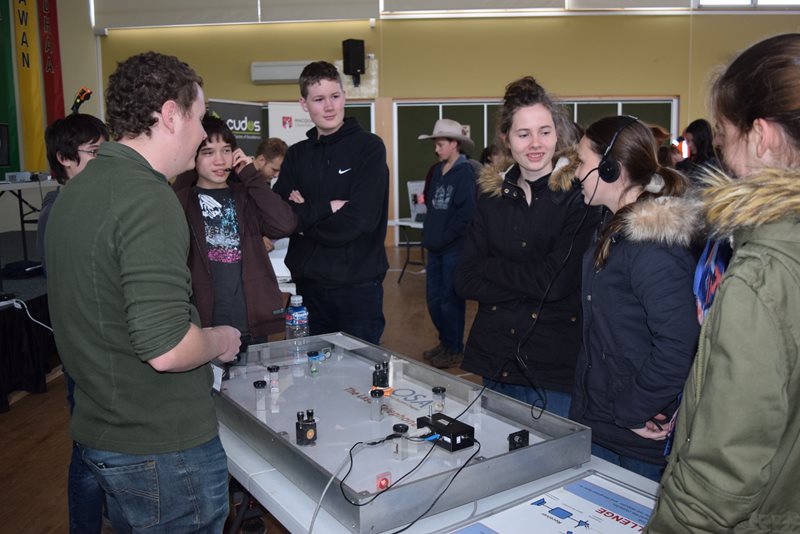Light Up the Outback - Bright Lights for Bright Minds
Macquarie OSA Student Chapter
In August, two physics PhD students from Macquarie University, Australia spent a week visiting regional and rural high schools around New South Wales. Eight different schools were visited over the course of 5 days, in a loop of almost 2000 kilometres. Over 450 students and their teachers participated in the sessions. Each visit to the schools had three parts. A short talk on optics or laser and communications was given first. The students then got the chance to interact with a range of optics experiments, including a thermal camera, Schlieren camera/mirror assembly, laser telephone, laser minigolf, laser music player, laser ray optics, diffraction grating glasses, and hand-held spectrometer. Just about every school had a different ‘favourite’ experiment, with students and teachers all getting involved.
Each of our experiments was also designed to give an insight into topics discussed during our short talk. For example, our infrared camera was a great way to show that the infrared light used in communications is real, and can be used in a variety of situations. The laser minigolf highlights how difficult directing a laser with only mirrors is and thus why optical fibres are so useful, with the Schlieren optics setup showing how we can visualise changes in refractive indices in the air.

We had a number of aims in providing these experiments. First and foremost, we wanted to engage students in science and show how these technologies do have an impact in their everyday life. We also provided equipment the majority of schools would not have access to, and of course the knowledge to link this technology to everyday uses. For example, if student was sick with cold or flu, their lymph nodes and sinuses showed up white hot on the IR – the same application that IR cameras are used for in immigration at airports. We also discussed the photonics technologies that go into manufacturing smartphones, as well as the range of sensors that are available. (A side note: if you own a Samsung smart phone, type *#0*# (star-hash-zero-star-hash) into the keypad – you get access to all the phone’s sensors!)
Many of the schools visited were isolated and hundreds of kilometres from their closest university or college. As such, we aimed to provide a link between the school and university. The final part of our visit was a discussion about university, both in terms of studying science and university life more broadly. This was rounded out by a Q & A session and a presentation of the Optics Discovery Kit, co-funded by the OSA and CUDOS, the Australian Research Council Centre of Excellence that a number of members of Macquarie’s MQPhotonics Research Centre are a part of.
While our days were often twelve hours long after presenting at multiple schools and driving to the next regional town, I genuinely believe the whole trip was very worthwhile. We had comments from students such as “This. This is what I want to do” when students were working with the experiments, and teachers contacted us after the trip to tell us that they had students change subject preferences for their final year into Physics.
We kept a blog during our trip that can be viewed at lightuptheoutback.wordpress.com. We’d also like to acknowledge the generous funding support from CUDOS, Macquarie University (through the MQPhotonics Research Centre) and an OSA Centennial Special Events Grant.
